
UNLOCKING FRANC MEMORIES
I think all the time that goes into the making of a wine, the complete and whole terroir of it, meets up with the complete and whole terroir of our own lives. For example, trying to pinpoint a smell that is familiar. You search your mind for what it is but you can’t always come up with the exact thing. But it is familiar because it is part of your makeup. When I say pencil shavings, for instance, I am taken back to an old-fashioned pencil sharpener in a classroom long ago. And when I say it’s like the taste of an old hard dusty raspberry candy from grandma’s dish that’s been sitting on the coffee table for who knows how long, but I pick it up and pop it in my mouth anyway dust and all, I remember the taste of the raspberry and the dust. And when I find that taste in a wine, it makes me smile. It’s one of the ways that wine becomes personal. So take your time to free associate when you meet a new one or an old one. Let it work on your senses. There are the fruit flavors and smells, perhaps a lively acidity that tickles your tongue, like your first Coca-Cola or maybe a deep warm spiciness that lingers, kind of like that Mexican food you had on Olvera St. in Los Angeles that time. Or the smell of autumn with its damp earth and dry leaves that you raked up yesterday. And when you realize what it is, it’s all there for you to enjoy all over again.
And, after that rambling preamble, but with it in mind, let’s move on to the wine we’re exploring this month…
WHAT A DISH
Cabernet Franc. I haven’t paid it much mind until now but I feel like I have been rolling around in a field of herbs, dried grasses and mashed berries, with a little gravel and dirt. It was a real meeting of terroirs! I tasted several versions of this wine and all of the above got written because I find the smell and taste of this wine especially distinctive. And they all had those qualities to a more or less degree. This is just a beginners list; I don’t have the means to purchase the really expensive ones. So I tried what I could, a variety from different places and years. But before I share those with you, let’s get a little more information and some historical context on this grape.
A HISTORY…
Cabernet Franc is one of the major black grape varieties worldwide. Its origins seem to lie in the Basque region in the western Pyrénées, whether that be modern day Spain or France I’m not exactly sure. But from there it migrated up to the Bordeaux region. We do know that Cab Franc predates Cabernet Sauvignon. They get compared a lot because of their similarities and now we know why. DNA testing shows that Cabernet Franc is one of the parents of Cabernet Sauvignon. (The other being Sauvignon Blanc!) And Cab Franc didn’t stop there. It is also one of the parents of Carménère and Merlot.
A HERITAGE…
Most Cabernet Franc is grown in France. Most often it is used as a blending grape. In fact it is one of the six legally approved grape varietals of Bordeaux. It is found in many of the world’s top Bordeaux wines. The most famous, and some of the most expensive, comes from the St. Emilion Appellation where treasured Cab Franc wines are produced, Château Cheval Blanc being the most notable. It is usually blended with Merlot but it is also produced as a single varietal.
Also look for Cabernet Franc from Chinon and Bourgueil, Saint-Nicolas de Bourgueil and the Anjou Villages appellations in the Loire valley. These are examples of a cool climate style and the local name for the variety is Breton. Breton was flourishing in the vineyards of the abbey of Bourgueil a thousand years ago!
The cool climate wines and the warm climate wines are pretty different. The cool variety means less alcohol, light to medium body, lighter in color and more mineral driven with a lively acidity. They exhibit more graphite, bright red fruit and red licorice. The warm climate wines have a little more body, are darker in color, higher in alcohol, increased tannins, and have more sweet fruit tastes, cedar and even chocolate. However, Cabernet Franc grape, in general, is savory and spicy, herbaceous and earthy and less sweetly fruity. It is more austere and can smell like tobacco, raspberry, cassis and violets with a peppery perfume. It can also put people off with aromas and flavors of tomato vine and bell pepper and even jalapeños. Cab Franc is legendary for them. But these characteristics are also what makes this a good blending grape. It adds loads of nuance and complexity to a more straightforward wine. But, in the end, you either like this wine or not!
Cab Franc grows everywhere! It likes cooler climates and ripens early. This makes it a good “insurance” wine. Meaning it’s great to have around if the weather suddenly turns bad on your Cab Sauv or Merlot. But it will also grow fine in warmer climates. Tuscany for instance. In fact, Italy is the second in production for this grape. Especially from Bolgheri and Suvereto. It can found in the IGT wines and the Super Tuscans. The cooler style will come from the Friuli region in the north.
Other places that produce this grape are the Sierra Foothills in California featuring the warmer style of this wine. Also look for warm climate examples from the Colchagua Valley in Chile. And even more from Argentina. More examples of the cooler style eminate from the Finger Lakes district in New York and also Ontario, Canada. In addition, you can also find various styles of this wine from New Zealand, Australia, South Africa and other parts of the Americas. Like, Virginia, USA. Who knew? It is also made into ice wine in Canada. Now that’s really cool!
THE LIST
So here’s what I tasted:
Bergevin Lane Vineyards. $30. ish (Got it a while back, price=?)
Paco Franco 2014 Cabernet Franc 14.8 abv
Columbia Valley, Washington
Lovely soft nose of black cherry, stewed red plum, crushed rock and just a touch herbaceous followed by tastes of red and black plum, baking spices with smooth tannins throughout. Quite easy to drink.
Beaucanon Estate $34.99
Cuvée Louis 2010 Cabernet Franc 15.4 abv
Napa Valley, California
Good example of the warmer style. Darker in color and more concentrated. Sweet floral, tobacco, raspberry jam and black tea on the nose with a palate of more raspberry but not overwhelming fruit. Touch of cedar and oak. Still potent tannins for its age but well balanced. A crowd pleaser.
Horton Vineyards $15.99
The Tower Series 2016 Cabernet Franc. 13.2 abv
Orange County, Virginia
Had to try it. 100% Cab Franc that was much leaner and light, almost transparent with a touch of brick color. Easily the most aromatic I tried with a strong herbaceous, musky nose and some mashed red pie cherry. The palate, while quite light, was intense with flavors of stewed plum, spice and sour cherry. The flavors popped then dropped leaving a bit of smoke and tannins. Not for everyone, but it was great with the lentil soup I happened to have.
Arraign Benegas Estate Wine $17.99
Cabernet Franc 2018 14.5 abv
Mendoza, Argentina
Much darker in color, deep ruby with purple highlights. A little sweet smelling with tomato stem and cherry pez candies. The palate followed with a quick rush of sweetness, then lots of spice and green pepper. A bigger, bolder wine with lots of tannic structure leading me to think it would be better with a little more age.
Maitre de Chai Cuvée Signé $18.99
Appellation Chinon Controlee 2017 12.5 abv
Chinon, France
This 100% Cab Franc is ruby red and smells like fresh crushed herbs and clean dirt. It is light and herbaceous on the palate with red sour cherry, orange bitters and tons of spice. Lots of juicy acidity here and a pomegranate finish. Quite lively!
There you have it. If you’re interested in pairing, this wine is very food friendly. I’m thinking of the Thanksgiving table here. If you can’t have people over, toast the turkey! I think it would go well with all the trimmings too. This wine complements herbed poultry, saucy stews, pork and pot roasts and anything heavy with herbs.
I’m still working on tasting some other Cab Francs. I’ve yet to try an Italian one for instance. It’s quite interesting to taste this grape in so many different styles. And fun!
It’s your turn now. Amble your own way through some wines and be open to whatever opens up before you. Let your curiosity lead the way!
Hope to see you in the tasting room!
Until then,
Cheers!
~ Peggy

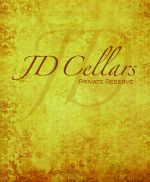
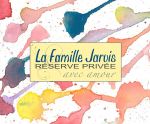
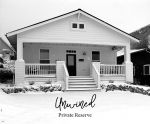
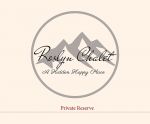
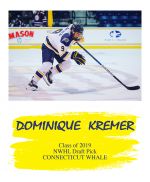
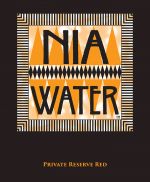

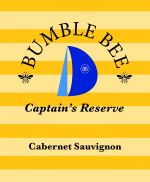
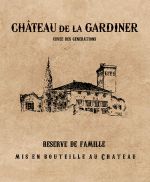
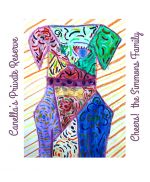
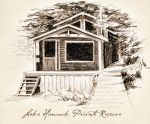
0 Comments